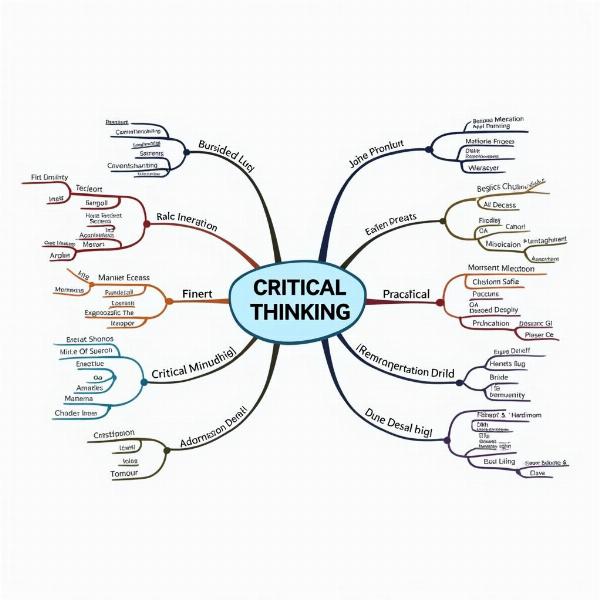Understanding the nuances of “critically analyse” in Hindi is crucial for academic, professional, and even everyday communication. It goes beyond simply summarizing or describing; it requires a deeper engagement with the subject matter, evaluating its strengths and weaknesses, and forming reasoned judgments. This article explores the various dimensions of “critically analyse” in Hindi, providing practical examples and insights to enhance your understanding.
Understanding “Critically Analyse” in Hindi
“Critically analyse” in Hindi can be expressed in several ways, each carrying slightly different connotations. Common translations include vishleshanatmak mulyankan karna (विश्लेषणात्मक मूल्यांकन करना), gambhirta se vishleshan karna (गंभीरता से विश्लेषण करना), and sookshma drishti se dekhna (सूक्ष्म दृष्टि से देखना). While vishleshan (विश्लेषण) signifies analysis, the added words emphasize the depth and critical nature of the examination. For instance, vishleshanatmak mulyankan specifically refers to analytical evaluation, highlighting the assessment aspect. Gambhirta se vishleshan karna emphasizes a serious and in-depth analysis, while sookshma drishti se dekhna suggests examining something with a discerning and meticulous eye. Choosing the right phrase depends on the context and the specific nuance you want to convey.
Practical Applications of Critical Analysis
The ability to critically analyse is valuable in numerous fields. In academic settings, students are often asked to critically analyse literature, historical events, or scientific theories. In the professional world, critical analysis is essential for problem-solving, decision-making, and evaluating research. Even in daily life, critically analysing information helps us navigate the constant influx of news and opinions, forming informed judgments and making sound choices.
Critically Analysing a Text
When critically analysing a text, whether it’s a poem, a news article, or a legal document, consider the author’s purpose, target audience, and the context in which it was written. Examine the language used, the arguments presented, and the evidence provided. Identify any biases or underlying assumptions. By engaging with the text on multiple levels, you can develop a well-rounded understanding and form your own informed opinion.
Critically Analysing a Situation
Critically analysing a situation requires gathering information from various sources, considering different perspectives, and evaluating the potential consequences of different actions. This could involve analysing a business challenge, a social issue, or a personal dilemma. By carefully examining the situation, you can identify the root causes of the problem and develop effective solutions.
Enhancing Your Critical Analysis Skills
Developing strong critical analysis skills requires practice and a willingness to challenge your own assumptions. Ask probing questions, consider alternative interpretations, and be open to changing your mind based on new evidence. Engage in discussions with others, as different perspectives can enrich your understanding.
 Developing Critical Thinking Skills
Developing Critical Thinking Skills
What are the key components of a critical analysis?
Identifying the central argument, evaluating the evidence, considering different perspectives, and forming your own judgment.
How can I improve my critical analysis skills in Hindi?
Practice regularly by analysing different types of texts and situations, engaging in discussions, and seeking feedback.
Conclusion
Critically analysing in Hindi encompasses a range of approaches, from vishleshanatmak mulyankan karna to sookshma drishti se dekhna. Mastering this skill is crucial for academic success, professional growth, and informed decision-making in all aspects of life. By embracing a critical mindset, you can delve deeper into the world around you and gain a more nuanced understanding of complex issues.
FAQ
- What does “vishleshanatmak mulyankan” mean? It means analytical evaluation.
- How is critical analysis different from summarization? Critical analysis goes beyond simply summarizing; it involves evaluation and judgment.
- Why is critical analysis important? It helps us form informed opinions and make better decisions.
- Can critical analysis be applied to everyday life? Yes, it can be used to evaluate information and make informed choices.
- What are some tips for improving critical analysis skills? Practice regularly, ask questions, and consider different perspectives.
- How can I express “critically analyse” in Hindi formally? Use vishleshanatmak mulyankan karna.
- Is there a more informal way to express “critically analyse” in Hindi? Yes, you can use sookshma drishti se dekhna.
Meaning-Hindi.in is your one-stop solution for all your Hindi translation needs. We specialize in a wide range of translation services, including business and commercial document translation, certified and legal document translation, technical and user manual translation, website and localization translation, educational and academic document translation, and express translation services. We are committed to providing accurate, culturally sensitive, and high-quality translations to meet your specific requirements. Contact us today at [email protected] or +91 11-4502-7584 for a free quote and experience the Meaning-Hindi.in difference.